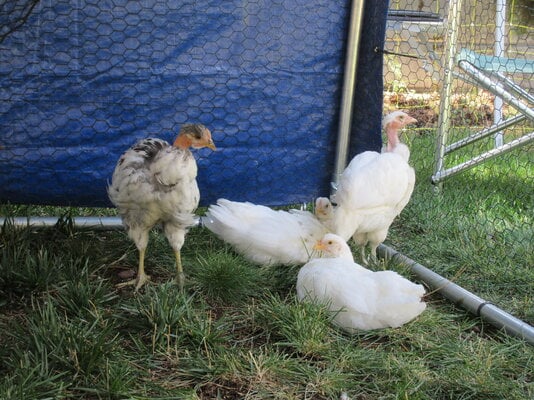Has anyone tried (or thought about) adding some Turkeys/Naked Neck gene into their sustainable meat program? From what I’ve read, the NN gene carries so many benefits - easier plucking, more meat production (especially in the breast), more resistant to diseases, great mothers, good taste, friendly, etc.
But as a whole, NNs generally don’t get as big as other meat birds (New Hampshire, Bresse, Delaware, Buckeye, etc.) - that is, unless you can find a breeder that has size as part of their program.
So the way I see it, if the NN gene was added into one of those gene pools of a different breed (or few breeds), wouldn’t it theoretically make those meat birds that much better for processing and sustainability? I know this loses the “purebred” aspect of those other breeds, but my main desire is for better, sustainable meat.
And if you were to do this, would you bring the NN gene in with a cock (and the hens be a different breed) or with NN hens (and the cock would be a different breed)?
Thanks!
But as a whole, NNs generally don’t get as big as other meat birds (New Hampshire, Bresse, Delaware, Buckeye, etc.) - that is, unless you can find a breeder that has size as part of their program.
So the way I see it, if the NN gene was added into one of those gene pools of a different breed (or few breeds), wouldn’t it theoretically make those meat birds that much better for processing and sustainability? I know this loses the “purebred” aspect of those other breeds, but my main desire is for better, sustainable meat.
And if you were to do this, would you bring the NN gene in with a cock (and the hens be a different breed) or with NN hens (and the cock would be a different breed)?
Thanks!







